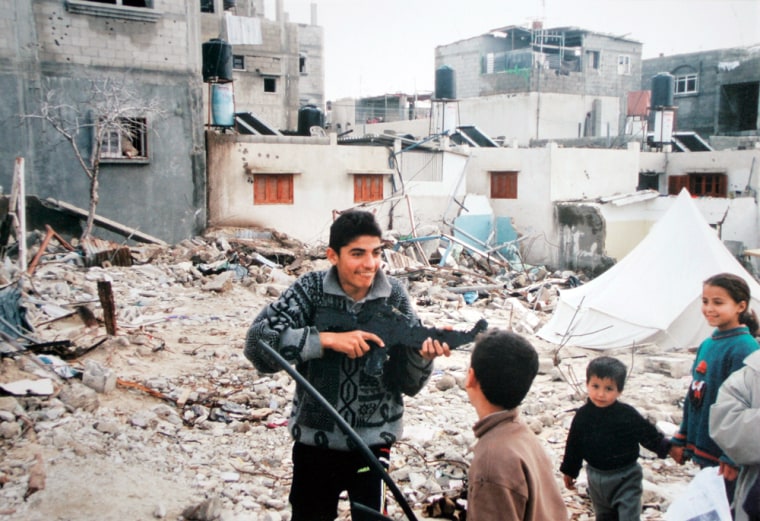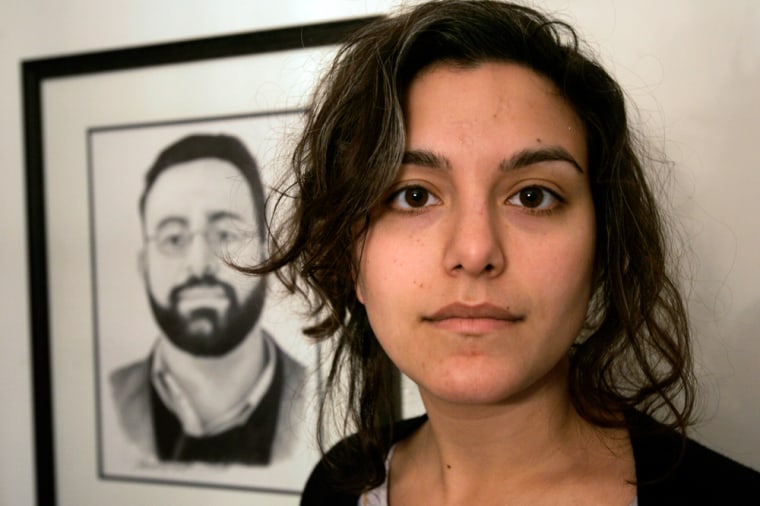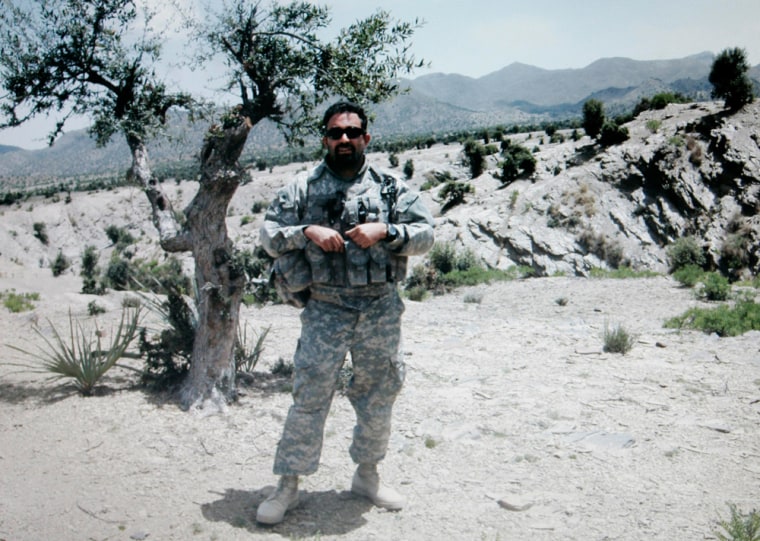On the overcast New England morning Michael Bhatia came home, nearly 400 of his colleagues, family and friends turned out to meet him.
Seven months had passed since Bhatia, a 31-year-old scholar in international relations from Brown University, hefted his pack across the tarmac at Fort Benning, ready to begin his sixth journey to Afghanistan.
Every trip had come with risks, but this one was the toughest to explain. No one questioned Bhatia's commitment to Afghanistan, but many disagreed sharply with the way he'd chosen to pursue it.
"I am already preparing for both the real and ethical minefields," he e-mailed friends, hours before boarding.
Pentagon experiment
Bhatia was joining the Human Terrain System, a Pentagon experiment to reengineer the battle against Afghan and Iraqi insurgents by teaming soldiers and scholars. Human Terrain set off a war of its own in the academic world: Critics, particularly anthropologists, argued that Human Terrain researchers could not serve two masters — that they risked betraying the people they studied by feeding information to the military.
Bhatia disagreed. But the only way to know, he told friends, was to see for himself.
Even skeptical colleagues looked forward to the conclusion of his journey: If anybody could thread the ethical minefield, it was Mike.
Now, after months of waiting, Bhatia had brought colleagues from campus and the combat zone together in the same room.
They filed slowly from the oak pews of St. Joseph Church, out into the midday chill.
On the front steps, they stood shoulder to shoulder as a lone bugler sounded Taps.
The bespectacled "Professor" was home, but the gray silence offered none of the answers he'd promised. Instead, there was only the ache of the unanswerable: Why?
A story of one man's choice
This is the story of one's man choice — and its consequences — set against a war that defies easy solution. But it begins before most Americans had ever heard of the Taliban, or could place Afghanistan on a map.
In the fall of 1995, during his first week at Brown, Mike Bhatia hung a United Nations flag across his dorm room wall. That winter, he and friend Chad Stockham took a road trip to Dartmouth College, where Bhatia — who was studying Russian — spent a weekend pretending to be a Kazakh exchange student.
"He created the Borat character 10 years before Sacha Baron Cohen did," Stockham said.
There weren't many students quite like Bhatia. Friends admired his smarts, the way he'd run his hand back through dark, wavy hair while discoursing on the Middle East or the military. They were amused by his eccentricities, the way he'd walk around with sandals in the wintertime.
Walk past a used bookstore with Mike and there was no escaping a trip inside that could last for hours. This was a man who once wrote a 180-page report when the assignment called for 20.
"On the one hand he was very much an intellectual, very much an academic," friend Seth Resler said. "On the other hand, he'd come over and we'd drink beer and play Halo until 2 o'clock in the morning."
'An idealist and a realist'
On a campus with clashing factions of students backing Israel and Palestine, he was one of the only people who had good friends in both. At Brown's Watson Institute for International Studies, director Jarat Chopra was taken with the young man whose interest in international conflict went beyond wanting to do research.
"There are many intelligent students, but he was someone who already clearly was going to be able to connect an intellectual environment with a practical environment," Chopra said. "He was an idealist and a realist."

When Bhatia graduated in 1999, he traveled to newly independent East Timor with Chopra as UN observers and to Kosovo, to supervise elections.
Inside his first book, published in 2003, Bhatia thanked his family "for their tolerance of long absences and distracted residences."
The defining absences were spent in Afghanistan, where Bhatia first traveled a month before the Sept. 11 terrorist attacks. He kept going back, logging one to four months at a stretch. Sometimes he walked alone, observing life in streets and marketplaces. Other times, he hired a translator for interviews with 350 combatants, the centerpiece of his research on the roots of the nation's long history of conflict.
From inside their Humvees, American soldiers too often saw Afghans as threats. But in his wanderings, Bhatia discovered Afghanistan's "daily life next to and within conflict."
"There are, in fact, many different Afghanistans," he wrote.
Years later, Chopra would recall Bhatia's passion. Once, his protege gave him a photo of Lawrence of Arabia; an all-too-telling quotation was printed inside the frame.
"The dreamers of the day are dangerous men," it read, "for they may act their dream with open eyes, to make it possible."
"Indeed," Chopra wrote, "Bhatia had the makings of a most dangerous man."
Iraq's human landscape
In December 2005, the Pentagon sent Col. Steve Fondacaro a new and unlikely tool — a heavy-duty laptop on which experts had attempted to map Iraq's human landscape.
Fondacaro was the commander in Iraq for the military's Joint Improvised Explosive Device Defeat Organization — a bid to fight deadly insurgent bombings with new types of intelligence and tactics. And this new computer was the work of a former Rand Corp. anthropologist named Montgomery McFate who argued that war against hidden insurgents demanded an understanding of local cultures.
The Pentagon dispatched the laptop to Diyala Province, where a brigade combat team from Fort Carson, Colo.'s Fourth Infantry Division, confronted a rising Sunni insurgency. But Fondacaro quickly rejected it, concluding that the computer alone was essentially worthless.
Sending in the laptop was "like handing the brigade commander a whole library full of books. He needs answers. He doesn't need books," said Fondacaro. "It was just a tool. ... Only humans can solve this human problem."
The Pentagon was arriving at much the same conclusion.
Teams mirrored a shift in thinking
In 2006, the military ordered a new test, assembling five teams pairing military specialists with civilian social scientists and deploying them to Iraq and Afghanistan. The Human Terrain teams would work like anthropologists, interviewing tribal leaders and villagers in war zones to decipher the tensions, fears and needs that might build support for enemy fighters.
The program — which has so far deployed 27 teams — mirrored a shift in military thinking, reinforced by two prolonged wars.
Fondacaro, who retired from the Army in 2006, was recruited to lead the program, trying to win the skeptical hearts and minds of academics and military leaders.
Fondacaro says McFate warned him in advance to prepare for a different kind of battle.
"Get ready," he recalls her telling him. "You're trying to bring together the Hatfields and the McCoys."
Long-held suspicions
The Defense Department's interest in social science renewed long-held suspicions among academics. Those misgivings date back to at least World War I and revelations that the Office of Naval Intelligence recruited four U.S. archaeologists as spies to aid in its search for covert German submarine bases.
The divisions deepened with the U.S. involvement in Vietnam and elsewhere in southeast Asia, as it became clear the U.S. military had combed through the writings of anthropologists, without their knowledge, for insights it might use to counter insurgents.
When the Central Intelligence Agency began advertising job openings in the American Anthropology Association's newsletter in 2005, it dialed up the skepticism.
"Now is arguably the most dangerous and critical moment in history," AAA President Alan Goodman, told members at the group's annual convention the following fall. "If anthropology is to collectively figure out its role in building a more just world, it needs to act fast."
Mike Bhatia walked straight into that debate. In July 2006, he returned to Brown's red brick campus above downtown Providence, assigned as a visiting scholar to an office on the third floor of the Watson Institute. That fall, Bhatia's research partners asked him to attend an Air Force University conference examining the military's newfound interest in the social sciences.
Talk at the conference, in a hotel near Alabama's Maxwell-Gunter Air Force Base, made clear the military's interest in culture was "coming to a tipping point," said Tracy St. Benoit, an anthropologist who had already signed on with what would become the Human Terrain project.
Putting social science to work
The universe of people working in military social science is small. St. Benoit had heard about Bhatia's work in Afghanistan and sought him out. They talked for nearly four hours over dinner, adjourning to the hotel bar to discuss the idea of defusing insurgency by putting social science to work in the war zone.
"Why don't you come and do the same thing I'm doing?" — he could pursue professional and personal goals, and make a difference, St. Benoit recalled telling Bhatia.
Back in Providence, Bhatia talked enthusiastically about the conference. But at Brown, as at other campuses, professors like Catherine Lutz thought the military's attempt to harness academic brainpower threatened to cross a line.
Lutz — daughter of a Navy veteran and a researcher on cultural training in UN peacekeeping missions — was outspoken in her criticism of the Bush administration's approach to war and attempts to make scholars part of the military's campaign.
"One cannot help a mistaken mission and make it better, if it's wrong from the get-go," Lutz said in a recent interview, when she declined to speak about Bhatia.
But Bhatia, sifting through the information he'd heard about HTS, was following a different line of thinking.
'He was flat brilliant'
In late January, he called Fondacaro about the Human Terrain program.
"He just knew about Afghanistan ... about how complex it was. He was flat brilliant," recalled Fondacaro.
From the beginning, Bhatia and other Human Terrain social scientists were told explicitly that they would be going out on patrols, and that the missions could be dangerous, McFate said.
But when a recruiter from BAE Systems — the contractor that staffs civilians for Human Terrain teams — contacted Bhatia, he offered a job with limited risk, "embedded with the Brigade Combat Team but not accompanying the BCT on patrols."
"The HTS team would stay in the 'Green Zone' and collect information from returning BCT patrols," the recruiter wrote in a Feb. 14, 2007, e-mail to Bhatia. McFate said that job description was wrong, and that Bhatia knew that.
Bhatia tried to reassure family
On a long walk around Providence's East Side, Bhatia tried to reassure his sister he'd be safe. He left the impression, Tricia Bhatia said, that he wasn't going to be leaving base all that much. "I think when he got there it became a very different story."

A few weeks later, an anthropological association committee examining the military's attempts to add culture to its arsenal held an open hearing on the Brown campus.
If academics refused to work in the war zone, "is there a risk that you become somewhat ethically pure but intellectually impoverished?" one of Bhatia's colleagues, James Der Derian, asked.
Bhatia, stroking his beard thoughtfully, answered with his own question.
"If you are involved, to what extent can you dictate the freedom or an ability not to provide information" to the military, he asked. "Or is that just naive?"
Training its first recruits
By late 2006, Human Terrain, based at Kansas' Fort Leavenworth, was training its first recruits. The plan called for quick deployment of two teams to Afghanistan and three to Iraq.
Bhatia kept his interest in Human Terrain hidden from most of his colleagues. But in quiet conversations, a few confidants posed tough questions.
"We spoke pretty frankly about the dangers to him," said Robert Rubinstein, an anthropologist at Syracuse University whom Bhatia admired. "One of the things that Michael wanted to know was could it do good? Could it save people?"
Dissecting the ethics
Over five or six phone calls in March 2007, the two men dissected the ethics of working with the military. If you're wearing a uniform and carrying a weapon, will Afghan villagers really have a choice of whether to talk with you, Rubinstein asked Bhatia. How do you steer a course between scholarly inquiry and coercion?
Bhatia replied with his own question: How will we know if we don't engage?
The academic drumbeat against Human Terrain, meanwhile, grew ever louder.
By summer 2007, Lutz and a group of other professors started the Network for Concerned Anthropologists, calling on scholars to oppose the program.
In November, the Anthropological Association issued a statement saying that Human Terrain raised "troubling and urgent ethical issues."
Allegations of mismanagement
Criticism of the program broadened to charges that, in its rush to field teams, Human Terrain was hiring people without the right qualifications and not training them adequately. Zenia Helbig, a sociologist hired for a Human Terrain team headed for Iraq and then fired, said the program was mismanaged, staffing teams with people who did not speak the languages of the region they'd be working in, and whose expertise was sometimes unrelated.
"They were really just on a mission to hire warm bodies," said Helbig, who still supports the program's concept. "I think it was partly making it up as they go along."
Human Terrain leaders acknowledge working under tight time pressure. Their job was complicated by the very limited pool of social scientists with research experience in Iraq or Afghanistan, language skills, and experience working with the military.
"If we were looking for those people we would still be waiting for the phone to ring," McFate said. "We were being asked to field teams during the middle of the war ... something that had never been done before, was very experimental and for which there was no model of how to do that."
It is difficult to assess the program's effectiveness. Fondacaro acknowledges frustration with recruiting efforts, and says the program has worked to hone its approach and define its mission. But he defends the expertise of the Human Terrain teams and their work.
The prime example, he said, was Michael Bhatia.
By July, Bhatia's mind was made up. He drove to a family gathering in upstate New York and explained to his mother, Linda, that he felt an obligation to use his unique knowledge of Afghanistan. Why should U.S. soldiers be doing all the work on the ground while he escaped responsibility?
He left for Fort Leavenworth that September.
Only a 48-hour briefing
Two months later, he finished training — just as St. Benoit, the anthropologist who introduced him to the program, returned from Afghanistan. Bhatia would replace her on AF-1, the first Human Terrain team.
St. Benoit said she told managers she needed two weeks to brief Bhatia about the very different Afghanistan he was about to encounter, but he was going on leave before deployment. They had just 48 hours.
Afghan civilians "are going to look at you differently than they did before," St. Benoit told Bhatia. "You're now in a uniform and that carries symbolism. That lets the other person know you're not neutral anymore. You've declared a side.
"Please recognize that when you're downrange — that when you tell them you're a social scientist, they won't always see it that way."
Part 2 of this series coming Monday
